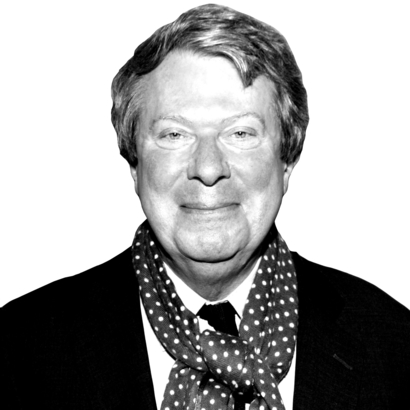The theater producer behind The King and I (2015) and Oslo (2017)—both of which he won Tony Awards for—has served as the artistic director of New York’s Lincoln Center Theater since 1992. Here, Bishop shares the books he was first drawn to: “I have a habit of staring at my bookshelves while eating (my bookshelves are in the dining room),” he says, “just to make sure that these four books, all with dust jackets, are still there!”
Act One, by Moss Hart
This is the greatest theatrical memoir ever written and it reads like a Dickens novel. I was 12 years old when it first was published—an impressionable age and a perfect age to read about a young man’s dreams of breaking into the theater. Those were Moss Hart’s dreams and they were mine and those of many like me. Act One contains two immortal lines: one at the beginning and one at the end. “The theatre is an inevitable refuge of the unhappy child” starts the book off, and the last line of the book, after the triumphant opening of Moss Hart’s first successful play, comes from an old Broadway pro, who tells the young author, “Not bad, kid. Not a bad curtain for a first act.”
My Mortal Enemy, by Willa Cather
This short book (short even for a novella) is perhaps Cather’s bleakest and most ferocious work. It is about an unhappy marriage and a lost fortune, and it contains the saddest, darkest last line that anybody ever wrote. The very sick leading character murmurs from her bed, “Why must I die like this, alone with my mortal enemy?”
The enemy in this case is her husband, her illness, which is probably cancer, and herself—a woman who made a bad marriage and ruined her life. She demands to be carried off to a cliff overlooking the sea, where she dies alone. Years later, whenever the narrator sees a young couple in the throes of early love, she always remembers those fatal last words, “Why must I die like this, alone with my mortal enemy!” May the young and happy couple not meet an inevitable unhappy end!
Lytton Strachey: A Critical Biography, by Michael Holroyd
This two-volume biography of Lytton Strachey was published in 1967 and revised a number of years later. The year 1968 was perfect for a 20-year-old English major who was desperately seeking a subject for his thesis: the then mostly forgotten Bloomsbury Group! The book is a juicy, detailed, beautifully written portrait of Strachey and all the rest of Bloomsbury: Leonard and Virginia, Duncan Grant, Carrington, Keynes, Roger Fry, and those who orbited around them. I am convinced that Holroyd’s book was hugely responsible for the publishing frenzy about Bloomsbury that went on for several decades: Bloomsbury telephone books, cooking books, gardening books, Omega Workshops books, and of course endless biographies of even the most insignificant of Bloomsbury characters. This was an influential book, at least in certain circles!
Pomp and Circumstance, by Noël Coward
I believe this to be Coward’s only full-length novel, and it involves the shenanigans of the British colony on the fictional Caribbean island of Samolo (really Jamaica, where Coward lived). A royal visit is on the way and everyone is in an eccentric and madcap tizzy. Coward designed and painted the garish and colorful dust jacket, and because of this, the book stands out more than any other when I gaze at my aforementioned bookshelves. This shy but precocious young man thought it was the most hilarious and sophisticated book he had ever read. My problem is that unlike the three other books mentioned above, I am afraid to read it again. I am afraid that it will seem silly and jingoistic and perhaps even racist. I prefer to simply gaze at it while I am eating dinner and remember my happy shrieks of laughter when I first read it and forced it upon my friends, none of whom liked it or even finished it!
Act One, My Mortal Enemy, Lytton Strachey, and Pomp and Circumstance are all available at your local independent bookseller or on Amazon


